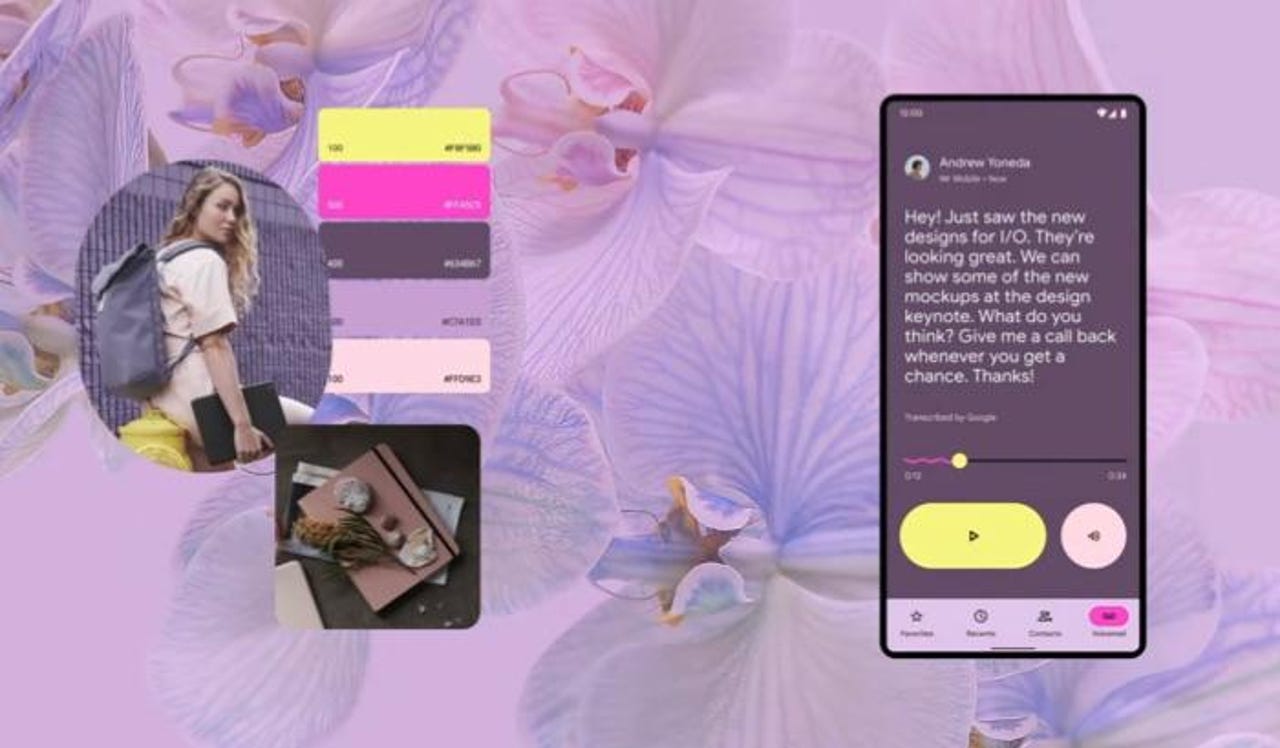Google I/O 2021: Android 12 targets the iPhone's biggest weakness

The Google I/O keynote gave us the first look at the next incarnation of the company's mobile operating system -- Android 12.
Some features were predictable, such as the big focus on privacy, and leveraging machine learning. And some were familiar because we've seen something very similar already on iOS, such as using the smartphone to replace car keys and an on-screen notification when apps access the camera or microphone.
But there was one feature that was quite unexpected. More than that, it targets a place where Apple's iOS is possibly at its weakest.
And that's customization of the user interface.
It seems like a small thing, but in a world where smartphones all look very much the same, having a way to differentiate them by allowing the end user to customize the colors is a way to make a device more personal.
Must read: Maybe the Android way of updating smartphones is better than the iOS model after all
This is something that Apple doesn't seem to care about. You get a choice or light more or dark more, and you can change the wallpaper, and that's about it.

Android 12 Material You
Google's new Material You design takes personalization a lot further. It will allow the user to change the look and feel of all their apps by generating personal palettes and having that reflected in the apps they use.
And if users can't be bothered to create the palettes, Android 12 can do it for them based on the wallpaper they have selected.
And this isn't just for the phone. Google has built it to be adaptable to every screen and device that runs Android apps.
Material You doesn't leave those who use accessibility features behind. It allows the user control over things like color, contrast, size, and line width.
Rather predictably, Google will begin by rolling this feature out on its Pixel line of handsets. Where it goes from there, we don't yet know.
It will be interesting to see what companies like Samsung do with it.
For a company that claims to put design at the heart of everything it does, Apple has been slow to both refresh iOS and give users control over the look and feel of their iPhones. This may very well be the push that Apple needs to freshen the look and feel of iOS, and perhaps add controls to allow users to take more control.
It feels rather odd to see a revamped user interface as a big step forward for an operating system in 2021, but mobile platforms have suffered stagnation for too long. Google finally putting effort into making what seems like a real change may very well be what's needed.